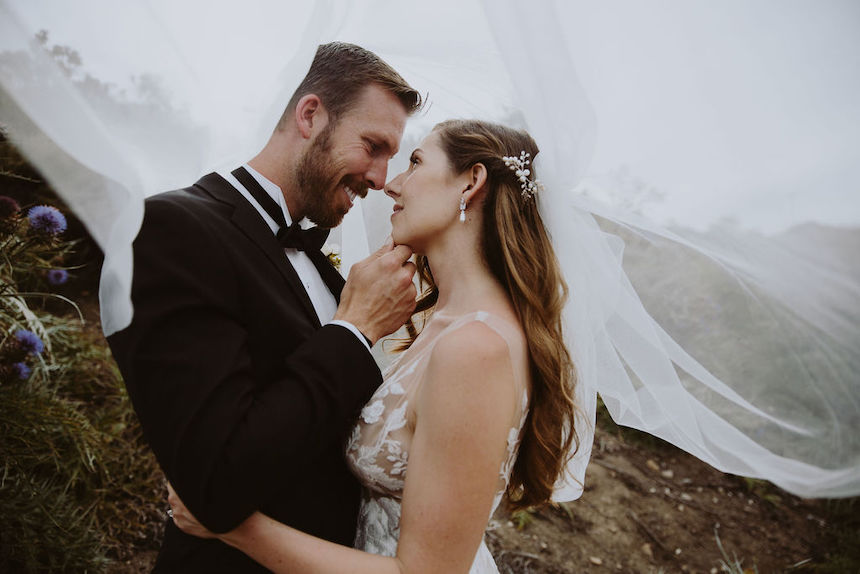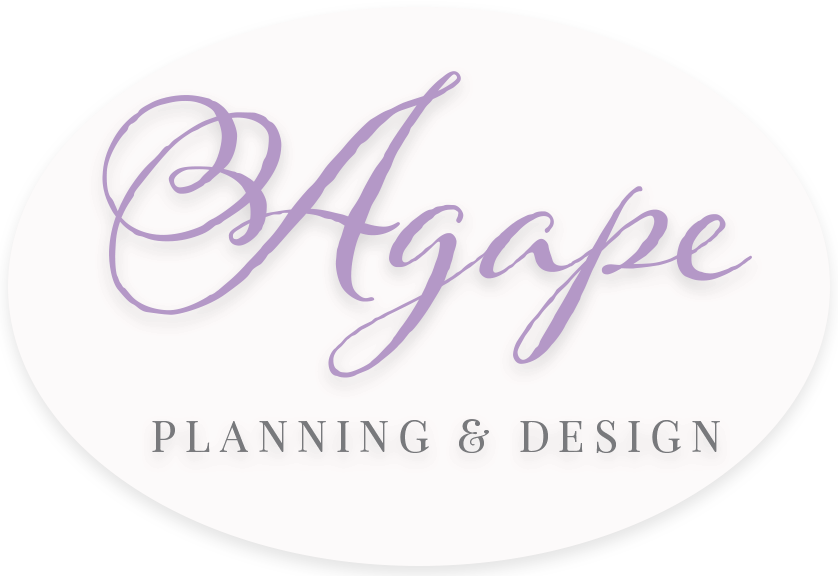
As the most iconic wedding accessory, the veil completely transforms your entire bridal look. It often gives you that instant “I’m a bride!” moment. With so many lengths, styles, and embellishments for veils out there, the search can be overwhelming. To help you navigate through this process, we have put together a few essentials to consider when finding your perfect veil!
Dress Silhouette. The length and silhouette of your dress will help guide you in your veil decision. For ball gowns and A-line gowns, almost any length veil (except for ballet length) works with these dresses. For trumpet or mermaid silhouettes, the fingertip length, chapel, cathedral, and birdcage veils all look lovely with these style dresses—however, elbow length veils should be avoided so not to disrupt the curvy flow of the dress. Sheath dresses work well with most lengths, although it is best to avoid a veil with a long train (which can overwhelm the simplicity of a sheath dress). Tea length and short cocktail dresses look fabulous when paired with birdcage veils, however an elbow length veil can work nicely as well.
The Embellishments. If your dress is intricate in design or has a daring backline, keep your veil simple with minimal (if any) embellishments. If your dress is simple and streamlined, you have the ability to be more adventurous with a detailed, statement veil. Don’t feel the need to match the embellishments of your dress and veil perfectly. Embellishments should complement one another in size, style, and color.
The Venue. Your ceremony venue can also help determine the type of veil you should consider. If your ceremony will be taking place in a house of worship, then a chapel or cathedral-length veil is perfectly appropriate. If you are getting married in a potentially breezy outdoor location, a veil with a long train is not your best option.
Hair Style. Before committing to a veil, we recommend considering how you envision wearing your hair on the wedding day. Your hair style will determine the best type of veil, as well as the placement. It will also help to search for images of your desired hair style with the veil you are considering, to get an idea of the look you’re going for. To make sure there are no hiccups the day of the wedding, do bring your veil to your hair trial appointment to get your stylist’s input, as well as to make your final decision on placement.
Preferred Length. To further narrow down your options, consider if you want a longer veil with a train/no train or a shorter veil. Longer veils (chapel and cathedral length) are beautiful, ethereal, dramatic, and typically more formal. They are also a bit more high maintenance and require being removed after the ceremony. Shorter veils (birdcage, shoulder-length, elbow, fingertip, and ballet veils) are less formal and simpler to manage, and can also be easily worn to the reception, if desired.
PHOTOGRAPHY | Hannah Beth Photography
